
Waterbuck
Name
Waterbuck (Kobus ellipsiprymnus)
Order - Artiodactyla Family - Bovidae
Appearance
The waterbuck is a big, strong antelope, with bulls measuring 1.4 m at the shoulder with a mass of 250 - 270 kg. Cows weigh about 205 - 250 kg, and both sexes measure 210 cm in length. They are brownish-grey in colour with a shaggy coat. They have a white collar under their throats, and their eyes and nose are marked with white patches.
Their rounded ears, also white on the inside, are an identifiable feature. Bulls have long horns that curve forward. Bulls and cows emit a musky scent that remains at their resting sites.
Waterbuck Diet
When one considers that animals’ bodies comprise about 70% water, it is no surprise that African mammals all have had to develop tactics for keeping hydrated in a mostly dry and hot environment. Waterbuck are very water dependent being especially prone to dehydration.
They are always found within a 5 km radius from water, but usually less than 2 km from water, and will drink several times a day. Waterbuck are grazers and feed on the medium to short grass pastures adjacent to waterholes. Their digestive systems are adapted to coping with a high amount of roughage although they do select the more palatable protein-rich grasses available.
They do also do some browsing during dry conditions. Grass has lower moisture content than browse and waterbuck need to drink to help digest their food. Because they drink frequently their droppings are usually wetter than other ruminants and the pellets tend to deform and stick together in clumps. By Megan Emmett
Waterbuck Breeding
After a gestation period of nine months, a single calf is born and rarely twins. For a few weeks after birth, the mother hides the young in dense thicket or long grass before it joins the herd.
Births peak during the summer months in South Africa, while mating occurs during winter. Mating can happen during the year at a lower intensity.
Waterbuck Behaviour
The waterbuck is a social animal that lives in herds. Dominant bulls are territorial and protect their area of land by coming across as aggressive, or at times fighting.
Cows, calves and young bachelors gather in herds, the composition of which changes from day to day as new members join or leave. Herds can comprise of 30 members. The waterbuck is a strong swimmer and can swim to safety in deep waters when threatened.
Waterbuck Habitat
They prefer dense, woody vegetation and medium to tall grass containing moisture. At times, the waterbuck will travel into the open floodplains or woodlands of South Africa.
Where Are Waterbuck Found
The waterbuck can be found in South Africa along the main drainage systems of Mpumalanga, Limpopo and northern KwaZulu-Natal. Recently, they have been reintroduced at Ithala and St Lucia game reserves.
Predators
They are preyed upon by hyenas, lions, leopards as well as hunting dogs, crocodiles and cheetahs.
Spoor Description
The waterbuck’s spoor varies according to sex and age. Some may be slim and pointy whereas others may be wide and blunt.
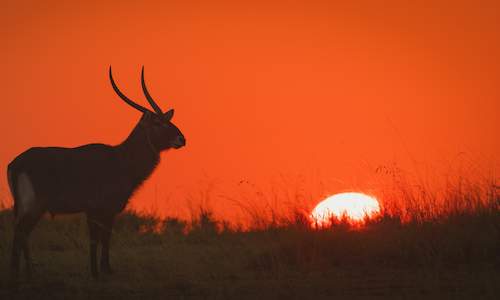
Waterbuck bulls are very territorial. Because they are always found near water, they are able to secure a resource-rich territory and remain...
more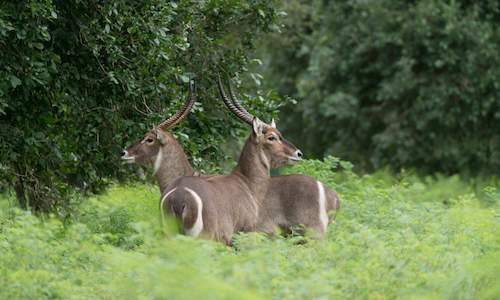
Favourite grass species: Guinea grass Panicum maximum, Spear grass Heteropogon contortus and Finger grass Digitaria eriantha...
more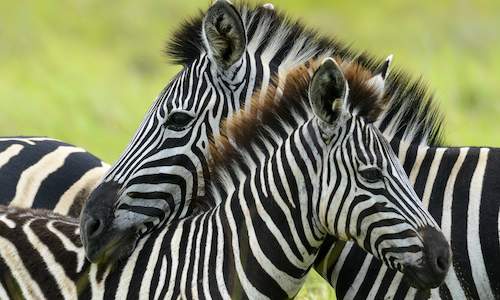
Learning about the mammals of South Africa is now so much easier for all South Africans - SouthAfrica.co.za is an excellent source of inform...
more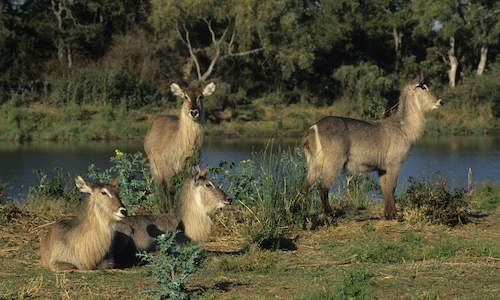
The waterbuck is best recognized by the white ring around its rump. This has lead to its Afrikaans colloquial name of ‘kringgat’ meaning...
more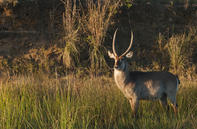
 Waterbuck bulls are very territorial. Because they are always found near water, they are able to secure a resource-rich territory and remain...
Waterbuck bulls are very territorial. Because they are always found near water, they are able to secure a resource-rich territory and remain... Favourite grass species: Guinea grass Panicum maximum, Spear grass Heteropogon contortus and Finger grass Digitaria eriantha...
Favourite grass species: Guinea grass Panicum maximum, Spear grass Heteropogon contortus and Finger grass Digitaria eriantha... Learning about the mammals of South Africa is now so much easier for all South Africans - SouthAfrica.co.za is an excellent source of inform...
Learning about the mammals of South Africa is now so much easier for all South Africans - SouthAfrica.co.za is an excellent source of inform... The waterbuck is best recognized by the white ring around its rump. This has lead to its Afrikaans colloquial name of ‘kringgat’ meaning...
The waterbuck is best recognized by the white ring around its rump. This has lead to its Afrikaans colloquial name of ‘kringgat’ meaning...